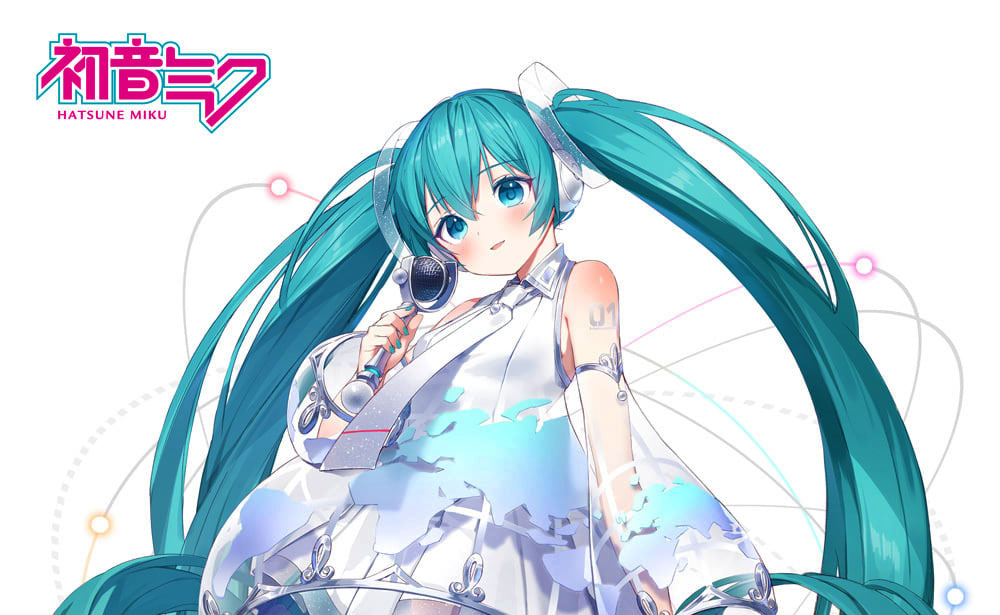People continually seek new experiences, and as technology advances, newer things grab our attention. Modern technology has revolutionized our lives—from how we play video games to how we order food. And now, our attention turns toward the music industry to see the rise of virtual celebrities.
Virtual celebrities perform just like the real-life idols we’re used to, but with one important difference—they aren’t real. Rather than humans singing and dancing, these celebrities are animated characters created by computer-generated imagery (CGI), augmented reality (AR), and other modern technologies. While this idea may seem relatively new, virtual celebrities have been around for a while.
Until recently, the most popular virtual celebrities were Japan’s Hatsune Miku and the British band Gorillaz. Crypton Future Media created Miku as a “Vocaloid,” a software used to synthesize singing by using recorded vocals of actual people. Miku, a “16-year-old girl” with iconic turquoise pigtails running down to her knees, stole the hearts of Japanese fans and crept toward global recognition. With hit songs such as “World is Mine” and “Lucky Orb,” the virtual celebrity generated roughly two billion dollars Canadian just five years after she debuted in 2007.
In 2009, Miku performed “live” at her first concert for Japan’s Animelo Summer Live before holding concerts in Singapore, France, and the United States, collaborating with famous artists like Lady Gaga and Pharrell Williams. The digital idol was also set to perform at Coachella 2020 in California until the festival was cancelled due to the pandemic.
Gorillaz was created even earlier, in 1998, by musician Damon Albarn and artist Jamie Hewlett. From music videos to interviews, the band appeared as the animated characters of Stuart “2-D” Pot, Murdoc Niccals, Noodle, and Russel Hobbs.
Unlike Miku’s synthesized voice, Gorillaz’s songs were mainly sung by Albarn and often featured other artists. Their animated characters have performed “live” as well through computer graphics, but other times they’ve performed with their creators visible. Gorillaz has been nominated for and has won various awards, including The Grammy Awards and MTV Video Music Awards, among others. Over time, the virtual band has sold over 20 million records worldwide.
Whether Miku, Gorillaz, or another virtual celebrity, more people are embracing the fascination of something new. And they aren’t limited to music. VTubers (Virtual Youtubers) like Kizuna AI, or digital influencers like Lil Miquela are popping up online too, racking up millions of followers. A craze has also started around the virtual girl group K/DA that debuted in 2018, made up of four characters from the online game League of Legends. “League” already has a massive following and K/DA’s first song, “POP/STARS,” became an instant hit, featuring the real voices of K-pop artists Soyeon and Miyeon. The two performed their song at the 2018 League of Legends World Championship, sharing the stage with holograms of their League of Legendscharacters.
According to creative director Patrick Morales, K/DA wasn’t meant to be a long-term addition. But after all the positive feedback, and hitting #1 on Billboard’s World Digital Songs Sales chart, Morales is keeping the group alive and making more music.
In all these examples, the unique animation is captivating. Virtual celebrities force us to take a second look and wonder about the mechanics behind it all. Before we realize it, we’re immersed in a new world that strangely mimics our own.
But what about the dangers of a world so close to home? Aespa—a new virtual K-pop group—has many fans worried for the health and treatment of its human counterparts.
Digital members, unlike the overworked human idols, will never get tired, fall below the industry’s harsh beauty standards, or go against the company. Comparing the real group members to their digital avatars can also be damaging, amplifying an ever-present problem of dehumanizing idols. People voiced their concerns online when teaser images showed the real and AI members side by side, noting that the digitized versions were oversexualized and conformed to unrealistic beauty standards. By introducing some virtual celebrities, it may worsen the K-pop industry’s issues involving body image and mental health.
While combining real worlds with digital ones is an exciting “new” thing now, there will always be consequences that follow. The entertainment industry is competitive and requires standing out among talented artists all over the globe. But after witnessing the success that follows this futuristic concept, it’s no surprise to see a rise in this kind of entertainment as technology paves the future for virtual celebrities.




Miku Hatsune does not have a human counterparts that could be subject to the issues raised here. In that regards specifically, she’s certainly a better idol, even than real life ones[1].
Another important difference is that she’s a open platform that anyone can use without the copyrights and control of the entertainment industry.
[1] https://www.youtube.com/watch?v=8Kb_WBChA5U